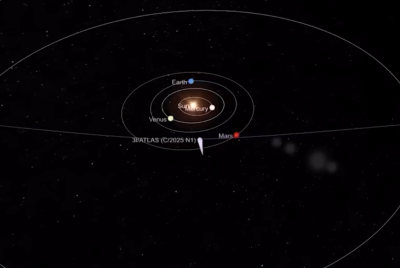Hayli Gubbi Eruption Ignites Next Earth Cycle Theory: Ethiopia Volcano Awakens After 12,000 Years
Dormant volcano erupts, fuelling ancient prophecies of a global reset.

For 12,000 years, the Hayli Gubbi volcano has slept silently beneath the Ethiopian landscape, a geological giant dormant since the end of the last Ice Age. Its sudden and violent awakening this week has done more than just spew ash across the Red Sea; it has ignited a firestorm of speculation that we are standing on the precipice of a monumental planetary shift.
As plumes of smoke rise 9 miles (14km) into the atmosphere, a growing chorus of voices is looking past the geological data and toward ancient texts, suggesting this eruption is the harbinger of a new Earth cycle.
Why the 12,000-Year Silence Is Fuelling 'The Reset' Theories
The timing of this eruption is capturing the attention of theorists and historians alike. The Smithsonian Institution's Global Volcanism Program confirms that Hayli Gubbi has had no known eruptions during the Holocene era—a period that began roughly 12,000 years ago. This specific timeframe is critical to proponents of cyclical history theories.
According to viral commentary surrounding the event, notably from online commentator Kela, this aligns eerily with Vedic cycles and the predictions of various ancient traditions, which state that great Earth changes occur every 12,000 to 13,000 years. The theory posits that we are exiting one epoch and violently entering another. 'B---- has been asleep for 12,000 years, and she just woke up in 2025,' Kela noted, highlighting the statistical anomaly of the event.
The eruption is being cited as potential physical proof of a 'Great Cycle Shift,' where the planet undergoes a rapid and catastrophic formatting.
Ancient Prophecies and a Classified CIA Book
The discourse has moved rapidly from volcanology to eschatology. Observers are pointing to The Book of Enoch, an ancient religious text, which warns that before these great shifts, 'the deep places of the earth shall open' and 'mountains shall melt like wax.'
Further fuelling the anxiety is the connection to Chan Thomas's The Adam and Eve Story, a controversial book famously classified by the US Central Intelligence Agency (CIA). Thomas wrote that Earth changes begin with 'crust pressure in rift zones,' a description that mirrors the current geological reality of the East African Rift.
The theory gains more traction when aligned with the predictions of Edgar Cayce, the famous 'Sleeping Prophet.' Cayce reportedly predicted that 'fire will rise near the Red Sea,' a prophecy that seems to have manifested literally with ash clouds now drifting over Yemen, Oman, India, and northern Pakistan.
@holikela2 HAYLI GUBBI in Ethiopia just erupted… #volcano #ethiopia #prophecy #earth
♬ original sound - Kela
Tectonic Rifts and the 'New Continent' Reality
Beyond the prophecies, the geological reality is equally dramatic. The volcano sits within the Afar region, a zone of intense geological activity where two tectonic plates are slowly tearing apart. This area is effectively the womb of a new ocean, where the African continent is splitting in two.
While scientists view this as a slow geological process, those following the prophecy angle see it as the 'fire from the depths' mentioned in ancient warnings. For proponents of the theory, the convergence of a 12,000-year dormant cycle ending exactly when a major rift zone becomes active is, for many, too precise to be a coincidence.
Ash Clouds and Economic Fears: The Reality on the Ground
While the internet debates the end of the age, residents in Ethiopia's north-eastern region face a more immediate crisis. The eruption sent shockwaves through the community, with resident Ahmed Abdela describing the moment: 'It felt like a sudden bomb had been thrown with smoke and ash.'
Local official Mohammed Seid confirmed that while there were no immediate casualties, the economic fallout could be devastating for the herding communities. 'While no human lives and livestock have been lost so far, many villages have been covered in ash, and as a result their animals have little to eat,' Seid said. This threatens the livelihoods of residents who have no memory of such a disaster.
While scientists analyse geological data, the world remains captivated by the possibility that Hayli Gubbi is more than just a volcano—it may be the first bell tolling for a new age.
© Copyright IBTimes 2025. All rights reserved.




















